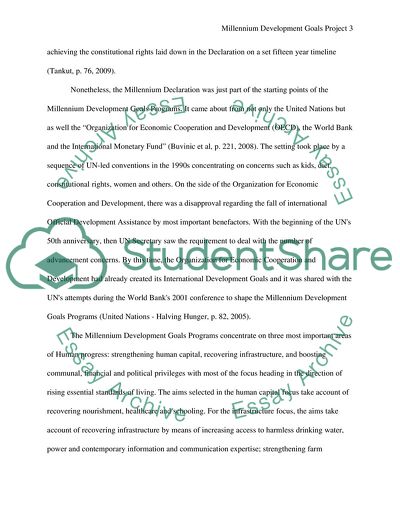Cite this document
(Positive Aspects of the Millennium Development Goals Project Case Study Example | Topics and Well Written Essays - 2500 words, n.d.)
Positive Aspects of the Millennium Development Goals Project Case Study Example | Topics and Well Written Essays - 2500 words. https://studentshare.org/social-science/1755334-evaluate-the-overall-importance-of-the-millenium-development-goals-project-in-light-of-the-progress-that-has-been-made-in-relation-to-the-planned-2015-deadline
Positive Aspects of the Millennium Development Goals Project Case Study Example | Topics and Well Written Essays - 2500 words. https://studentshare.org/social-science/1755334-evaluate-the-overall-importance-of-the-millenium-development-goals-project-in-light-of-the-progress-that-has-been-made-in-relation-to-the-planned-2015-deadline
(Positive Aspects of the Millennium Development Goals Project Case Study Example | Topics and Well Written Essays - 2500 Words)
Positive Aspects of the Millennium Development Goals Project Case Study Example | Topics and Well Written Essays - 2500 Words. https://studentshare.org/social-science/1755334-evaluate-the-overall-importance-of-the-millenium-development-goals-project-in-light-of-the-progress-that-has-been-made-in-relation-to-the-planned-2015-deadline.
Positive Aspects of the Millennium Development Goals Project Case Study Example | Topics and Well Written Essays - 2500 Words. https://studentshare.org/social-science/1755334-evaluate-the-overall-importance-of-the-millenium-development-goals-project-in-light-of-the-progress-that-has-been-made-in-relation-to-the-planned-2015-deadline.
“Positive Aspects of the Millennium Development Goals Project Case Study Example | Topics and Well Written Essays - 2500 Words”. https://studentshare.org/social-science/1755334-evaluate-the-overall-importance-of-the-millenium-development-goals-project-in-light-of-the-progress-that-has-been-made-in-relation-to-the-planned-2015-deadline.


